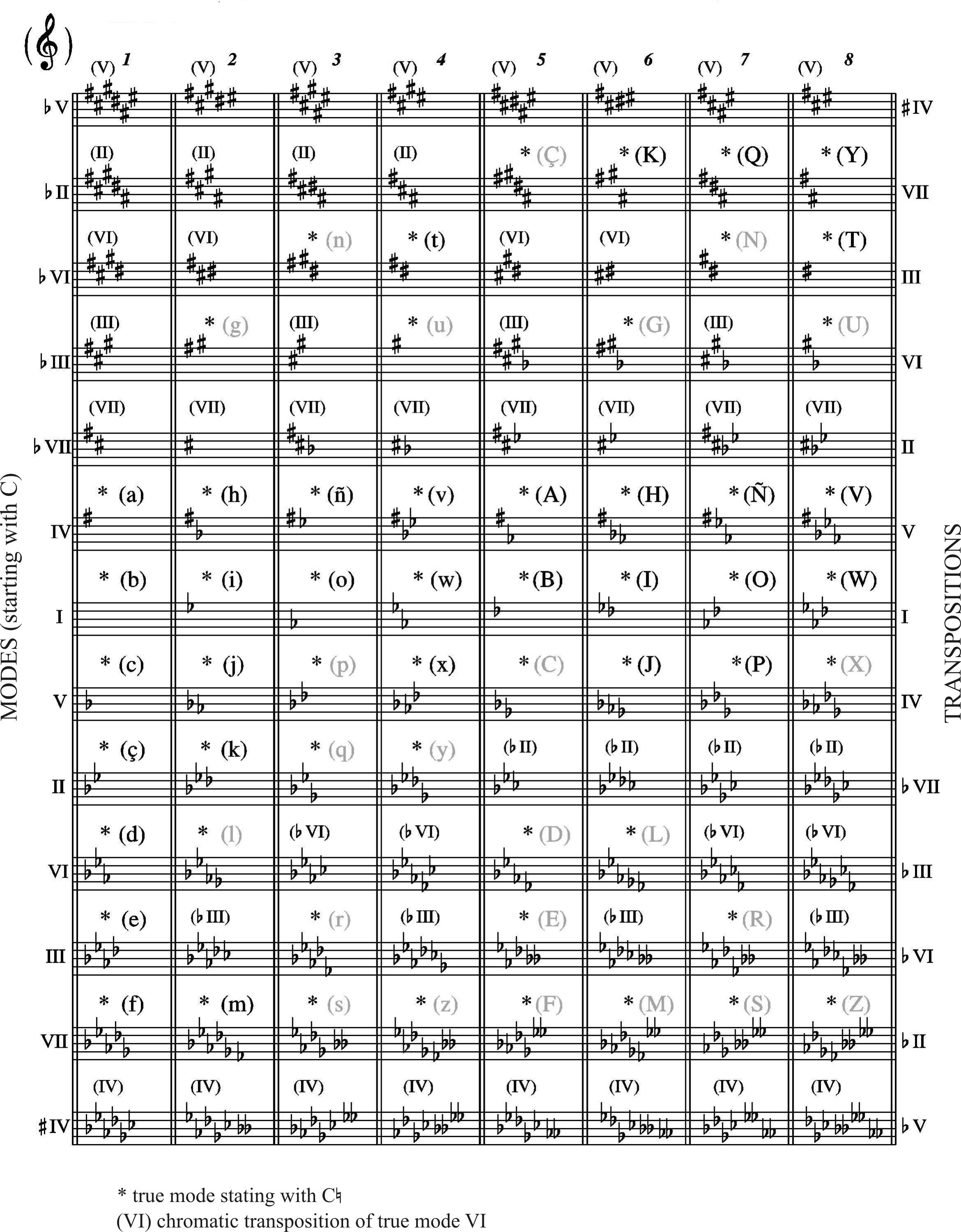Annex 2
9. Modes of the first eight 7-note scale classes
The first eight 7-note scale classes have in common that the notes of their modes can be written as different chromatic alterations of the major mode diatonic scale. In fact, this could be done for the majority of 7-note scale classes (forcing the enharmony to the extreme) but, except for some cases, only with the first eight scale classes can this be done without adversely affecting the harmonic significance of the notes.
For example, the C-D-F-G-A¬-B¬-B} scale (chord/scale class #19) could be written as a chromatism of the diatonic scale as follows: C-D-E{-Fx-G{-A{-B or, another example, C-D¬-D}-F-G-A-B (chord/scale class #11) could be as well written as C-D¬-E¬¬-F-G-A-B. But in both cases there could be an inaccuracy regarding the harmonic meaning of the notes because both scales contain the convergent structure (GBDF) which is the one that establishes the tonic C. So, in the first case E{ and Fx should be F and G and in the second case E¬¬ has to be D} (Figure 79).
Fig.79

The fact that the first eight scale classes (and their modes and transpositions), could be written as major diatonic scale chromaticisms is very useful because there is no need to put notes to show the scale classes modes, it is enough to indicate the key signature on the stave. This saves space and allows to express the harmonical relationships between all the modes of the eight scale classes in a clear way.
The meaning of the Modes Table 6 in this appendix is as follows:
Each column belongs to a scale class and each row to a mode. Even if there are 13 rows, there is only 7 authentically different modes for each column (those marked with *), the rest are their chromatical transpositions (all those having C{ or C¬ on the key signature —the roman number in parentheses shows the original mode—).
On the central row, belonging to I, there are the representatives of each scale class as shown in the Chord/scale class tables. These are the most stable modes in the sense that they start with the most tonicizated note. The left roman numbers

